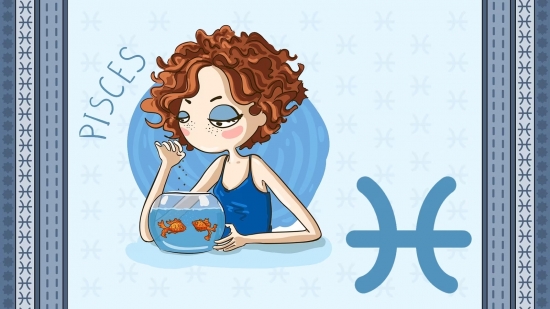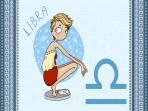[Музика]
ТІНА КАРОЛЬ & SADSVIT - МИ ( ПРЕМ'ЄРА 2025)
Тіна Кароль і SadSvit презентують постапокаліптичну пісню «МИ». Посилання на трек «МИ»: https://orcd.co/tinaka... “SadSvit — дійсно нове відкриття та натхнення української музики. Хочу, щоб його тв

Анна Трінчер - Вином текла (Official Music Video)
Графік концертів 27.02 КОРОСТЕНЬ https://concert.ua/uk/... 28.02 ЖИТОМИР https://concert.ua/uk/... 1.03 ЛУЦЬК https://concert.ua/uk/... 2.03 РІВНЕ https://concert.ua/uk/... 7.03 ЛЬВІВ https://

Максим Бородін - Якби не ти | Прем'єра 2023
Слухай пісню на всіх платформах : https://bfan.link/yakb... Концерт у Києві 12 лютого: https://concert.ua/uk/... Український співак та півфіналіст «Голосу країни -12» Максим Бородін випустив потужний

SKYLERR — Тюльпани [Official Video]
Слухайте на всіх музичних платформах — https://orcd.co/tylpanu 🌷 “Тюльпани” — це історія кохання, що стає випробуванням. Про той момент, коли ніжність перетворюється на біль, а слова коханої людини
![SKYLERR — Тюльпани [Official Video] SKYLERR — Тюльпани [Official Video]](https://www.ukrainian.nina.az/image-resize/1600/900/web/music.jpg)
Степан Гіга - Смереки осені не знають
Слухайте на усіх цифрових майданчиках: https://E-muzyka.link/... Офіційні сторінки : Facebook ► / stepan.giga.official Instagram ► / stepan.giga_official TikTok ► / stepan.giga_offici

[Астрологія]
Щотижневі гороскопи Риби, 23 лютого- 1 березня 2025 р. Прогнозує визнання та визнання
Риби щотижневого гороскопа з 23 лютого- 1 березня 2025 року, щоб знати свої астрологічні прогнози. Цей тиждень приносить можливості для самоаналізу та підсилювача; просування.

Щотижневий гороскоп Овен, 23 лютого- 1 березня 2025 року прогнозує рожевий здоров'я
Овен тижневий гороскоп сьогодні, 23 лютого- 1 березня 2025 року, щоб знати свої астрологічні прогнози. Ваше здоров'я також буде хорошим протягом тижня.

Щотижневий гороскоп Скорпіон, 23 лютого- 1 березня 2025 р
Скорпіон щотижневий гороскоп сьогодні, 23 лютого- 1 березня 2025 року, щоб знати свої астрологічні прогнози. Ви опинитесь у періоді значного зростання.

Щотижневий рак гороскопу, 23 лютого- 1 березня 2025 року прогнозує збільшення доходу
Рак-тижневий гороскоп сьогодні, 23 лютого- 1 березня 2025 року, щоб знати свої астрологічні прогнози. Якщо на цьому тижні пріоритетні стресу та фізичні навантаження.

Щотижневий гороскоп Терезів, 23 лютого- 1 березня 2025 р. Прогнозує перспективні результати
Сьогодні, 23 лютого- 1 березня 2025 року, щоб знати свої астрологічні прогнози. Перспективи кар’єри на цьому тижні виглядають перспективними для Терези.

[Вікіпедія]
322 (значення)
322 — термін, який має кілька значень. Ця сторінка значень містить посилання на статті про кожне з них.Якщо ви потрапили сюди за внутрішнім посиланням, будь ласка, поверніться та виправте його так,

Система керування базами даних
Ця стаття покладається значною мірою чи цілком на єдине джерело. Це може призвести до порушень нейтральності та недостатньої перевірності вмісту.Відповідне обговорення можна знайти на сторінці обго

CLDR
Common Locale Data Repository (часто скорочено CLDR, «Спільний репозиторій локальних даних») — проект [en], щоб надає дані локалей в XML-форматі для використання в комп'ютерних програмах. CLDR міст

Акцесорні мінерали
Немає перевірених версій цієї сторінки; ймовірно, її ще не перевіряли на відповідність правилам проекту.Акце́сорні мінера́ли (lat — accessorius), рос. акцессорные минералы, англ. accessory minerals

Класи еквівалентності
Клас еквівалентності елемента a{\displaystyle a} множини S{\displaystyle S} за заданим на цій множині відношенням еквівалентності є підмножина множини S{\displaystyle S} , що складається з елементі



